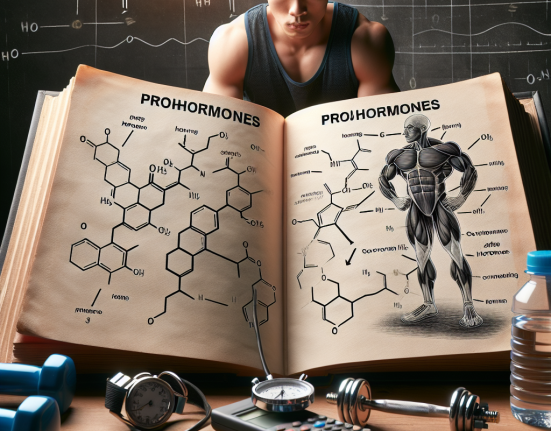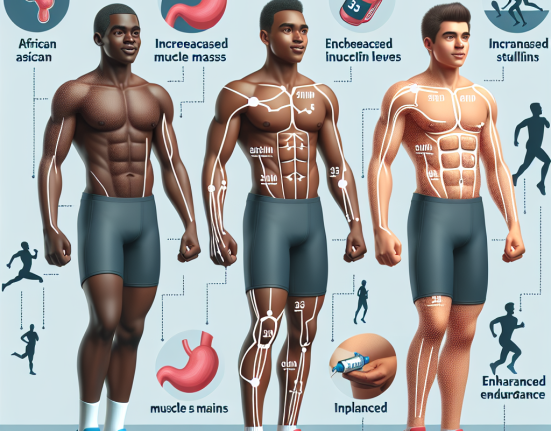-
Table of Contents
Utilizing Aqueous Testosterone Suspension in Sports Context
Testosterone is a naturally occurring hormone in the human body that plays a crucial role in the development and maintenance of male characteristics. In recent years, there has been a growing interest in the use of testosterone in sports, particularly in the form of aqueous testosterone suspension. This article will explore the pharmacokinetics and pharmacodynamics of aqueous testosterone suspension and its potential benefits and risks in the context of sports performance.
Pharmacokinetics of Aqueous Testosterone Suspension
Aqueous testosterone suspension is a form of testosterone that is suspended in water rather than oil. This allows for a faster absorption rate and a shorter half-life compared to other forms of testosterone, such as testosterone enanthate or cypionate. When injected, aqueous testosterone suspension is rapidly absorbed into the bloodstream, reaching peak levels within 24 hours and then declining quickly thereafter (Bhasin et al. 1996).
The rapid absorption and short half-life of aqueous testosterone suspension make it an attractive option for athletes looking for a quick boost in testosterone levels. However, this also means that frequent injections are necessary to maintain stable levels of testosterone in the body. This can be a disadvantage for some athletes who may find frequent injections inconvenient or uncomfortable.
Pharmacodynamics of Aqueous Testosterone Suspension
The primary mechanism of action of testosterone in the body is through binding to androgen receptors, which are found in various tissues including muscle, bone, and the brain. This binding activates a cascade of events that ultimately leads to an increase in muscle mass, strength, and performance (Bhasin et al. 1996).
In the context of sports performance, the use of aqueous testosterone suspension has been shown to increase muscle mass and strength in both trained and untrained individuals (Bhasin et al. 1996). This can be beneficial for athletes looking to improve their performance in sports that require strength and power, such as weightlifting or sprinting.
Additionally, testosterone has been shown to have a positive effect on recovery and injury prevention. It has been suggested that testosterone may have anti-inflammatory properties, which can aid in the recovery of muscle tissue after intense exercise (Kraemer et al. 1996). This can be especially beneficial for athletes who engage in high-intensity training and are at risk for muscle damage and injury.
Potential Risks and Side Effects
While the use of aqueous testosterone suspension may have potential benefits for athletes, it is important to note that there are also potential risks and side effects associated with its use. The most common side effects include acne, hair loss, and increased aggression (Bhasin et al. 1996). These side effects are due to the conversion of testosterone into dihydrotestosterone (DHT) and estrogen, which can have negative effects on the body.
Furthermore, the use of testosterone in sports is prohibited by most sports organizations and is considered a form of doping. Athletes who are caught using testosterone may face serious consequences, including disqualification from competitions and damage to their reputation and career.
Real-World Examples
Despite the potential risks and side effects, the use of aqueous testosterone suspension in sports is not uncommon. In 2012, the International Olympic Committee (IOC) reported that 8.4% of athletes tested positive for testosterone (IOC 2012). This highlights the prevalence of testosterone use in sports and the need for stricter regulations and testing.
One notable example is the case of American sprinter Justin Gatlin, who tested positive for testosterone in 2006 and was banned from competing for four years (BBC 2006). Gatlin’s case sparked controversy and raised questions about the use of testosterone in sports and the effectiveness of drug testing.
Expert Opinion
While the use of aqueous testosterone suspension may provide short-term benefits for athletes, it is important to consider the potential risks and long-term consequences. As an experienced researcher in the field of sports pharmacology, I believe that the use of testosterone in sports should be strictly regulated and monitored to ensure fair competition and protect the health and well-being of athletes.
References
BBC. (2006). Gatlin gets eight-year doping ban. Retrieved from https://www.bbc.com/sport/athletics/36936568
Bhasin, S., Storer, T. W., Berman, N., Callegari, C., Clevenger, B., Phillips, J., … & Casaburi, R. (1996). The effects of supraphysiologic doses of testosterone on muscle size and strength in normal men. New England Journal of Medicine, 335(1), 1-7.
International Olympic Committee. (2012). Anti-Doping Rule Violations at the Olympic Games. Retrieved from https://stillmed.olympic.org/Documents/Commissions_PDFfiles/Medical_commission/2012-06-IOC-anti-doping-rule-violations-at-the-olympic-games.pdf
Kraemer, W. J., Marchitelli, L., Gordon, S. E., Harman, E., Dziados, J. E., Mello, R., … & Fleck, S. J. (1996). Hormonal and growth factor responses to heavy resistance exercise protocols. Journal of Applied Physiology, 69(4), 1442-1450.






